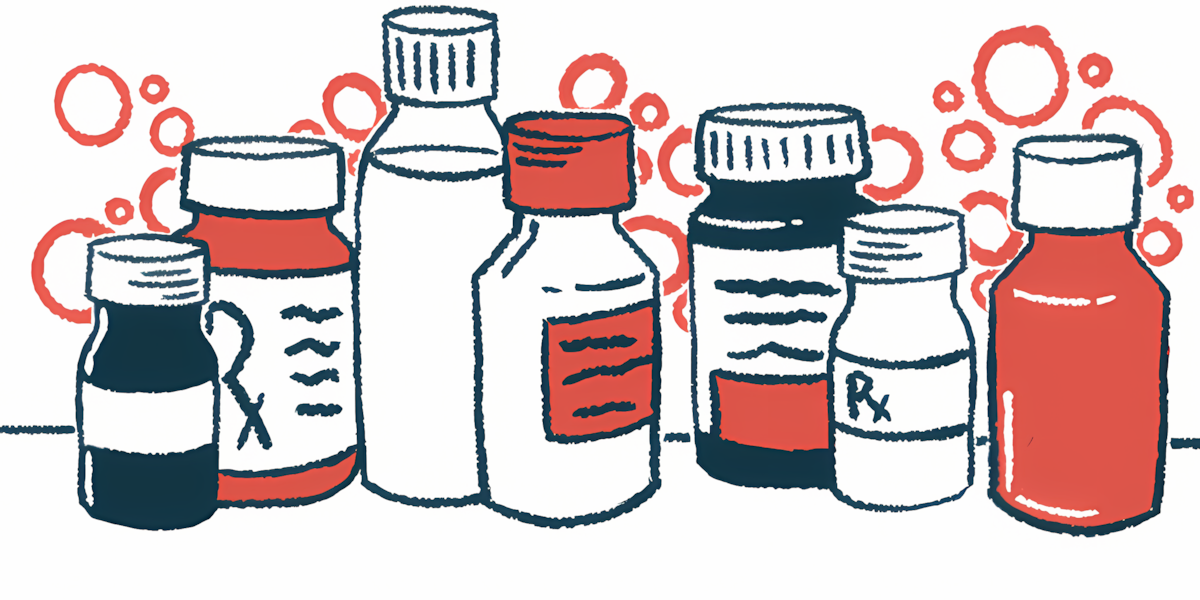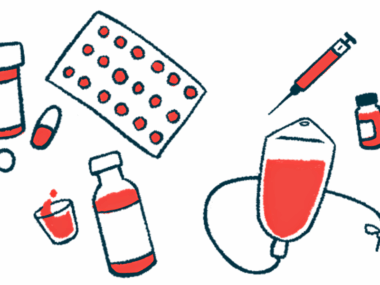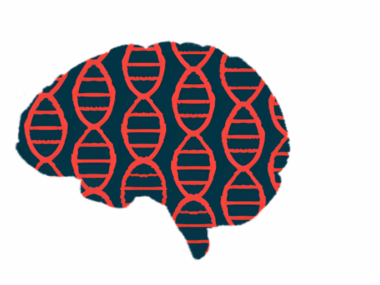Sex-related gap found for use of DMTs in MS patients ages 18-40
Women less like to get best treatment during childbearing years: Study
Written by |

Despite evidence supporting the safety of disease-modifying therapies (DMTs) during pregnancy, women with multiple sclerosis (MS) in their childbearing years are significantly less likely than men in the same age range to receive these typically most effective treatments, according to a study from France.
The researchers found what they dubbed a “sex-related gap” in the use of DMTs between women and men with relapsing-remitting MS (RRMS) with disease onset between the ages of 18 and 40.
Given this, the team called for both clinicians and patients to be “educated on the most recent recommendations on the use of DMTs,” specifically “in the context of pregnancy,” to prevent this inequity.
Sandra Vukusic, MD, PhD, a study author from the University of Lyon, noted that “when used early, MS drugs can delay the burden of the disease.” Thus, “women who are not treated could have worse outcomes in the long term and an increased risk of long-term disability,” Vukusic said in an American Academy of Neurology press release outlining the study’s findings.
“This loss of chance is not acceptable anymore, as there are drugs that are compatible with pregnancy or can continue to fight the disease long after people stop them when they are trying to conceive,” Vukusic said.
The study, “Sex-Related Gap in the Use of Disease-Modifying Therapies in Multiple Sclerosis,” was published in the journal Neurology.
MS occurs when the immune system mistakenly attacks the myelin sheath that serves as a protective coating around nerve fibers, ensuring the efficient transmission of electric signals in the body. The disease is most commonly diagnosed in young adults and women. In fact, being a woman is one of the strongest risk factors for developing the disease, data have shown.
Treatment approaches for MS have markedly evolved in recent years, most notably with the introduction of various DMTs. Evidence shows that access to high-efficacy DMTs early on in the disease is more effective at preventing long-term disability progression than not using such treatments.
Women 20% less likely than men to receive highly effective DMTs
Now, a research team from institutions across France sought to assess if and how a person’s sex affects access to DMTs. To that end, the team retrospectively analyzed health records from people with RRMS that had started between patients were ages 18 to 40.
The analysis included data from 16,857 women and 5,800 men, with a mean age of 29, who were followed for a median of 11.6 years.
Overall, the findings indicated that women with RRMS were less likely to receive a DMT than men with the disease. Data specifically showed that the percentage of person-years that study patients received a DMT was lower for women than it was for men (60.2% vs. 61.3%). The same was true for highly effective DMTs (23.5% vs. 25.3%). Person-years is a unit that measures the amount of time a group of people has been observed; it is calculated by taking the number of people being studied and multiplying it by the number of years they were followed.
Because women tend to have more active disease, and also are often advised to halt treatment during pregnancy or postpartum, the researchers reanalyzed the data after making adjustments for these factors.
The differences were found to persist, with women having an 8% lower chance of receiving a DMT compared with men. In the case of highly effective DMTs, analysis showed that women were 20% less likely than men to receive treatment.
“We found that women were less likely to be treated with a disease-modifying drug than men with the same level of disease severity, even when we took into account people who stopped taking their drugs during pregnancy or postpartum,” Vukusic said.
These sex-related differences became evident two years after disease onset for DMTs and one year for highly effective DMTs, and did not differ significantly according to patients’ age, according to the researchers.
Study found certain treatments significantly underused by women
Certain treatments were significantly underused in women, the researchers found. Among them were teriflunomide (sold as Aubagio), as well as sphingosine-1-phosphate receptor (S1PR) modulators — a class of DMTs that include fingolimod (sold as Gilenya), siponimod (sold as Mayzent), ponesimod (sold as Ponvory), and ozanimod (sold as Zeposia).
Also significantly underused by women were CD20 inhibitors, such as ocrelizumab (sold as Ocrevus), the data showed.
Interferon-based medications and natalizumab (sold as Tysabri) were initially less used by women, but then became equally used by both female and male patients after some time. Interestingly, glatiramer acetate (sold as Copaxone) and fumarate therapies, such as dimethyl fumarate (sold as Tecfidera), were initially equally used by patients of both sexes, but then became more frequently used by women.
Anticipation of pregnancy was probably an important factor in this difference between women and men with MS, but there could also be a reluctance to use these treatments when they may actually be the best way to manage the disease and delay disability.
Analyses also showed that among the 5,268 women who had a child, the proportion of those given DMTs started to decline 18 months before childbirth, from 42.6% to 27.9% at the estimated time of conception.
“Anticipation of pregnancy was probably an important factor in this difference between women and men with MS, but there could also be a reluctance to use these treatments when they may actually be the best way to manage the disease and delay disability,” Vukusic said.
Other factors also may have played a role, according to Vukusic, such a lag in both clinicians and patients learning about the established safety of new therapies.
“Another factor could be that new data continues to be collected on the safety of newer MS drugs, so more work is needed to communicate those findings to people with MS and their doctors,” Vukusic said.
Overall, these findings show a gap, by sex, in the use of DMTs by patients.
According to the researchers, these results highlight the need to educate both neurologists and patients on the latest guidelines for DMT use, particularly among women in their childbearing years, “to avoid deleterious therapeutic inertia.”







